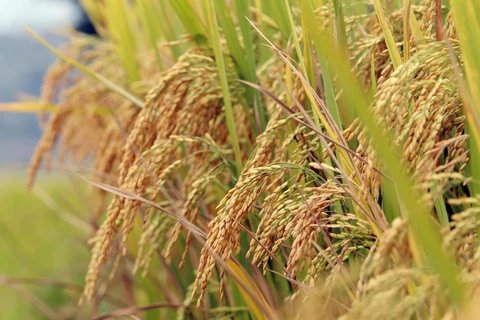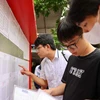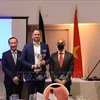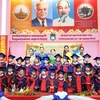 The northwestern region is home to the largest number of and most beautiful terraced fields in Vietnam. (Photo: VNA)
The northwestern region is home to the largest number of and most beautiful terraced fields in Vietnam. (Photo: VNA) Hanoi (VNA) – Terraced fields and the culture linked with them are considered a “specialty” of the northwestern region, but comprehensive investment strategies and development measures are needed to fully capitalise on this tourism resource, experts said.
The northwest is home to the largest number of, and most beautiful terraced fields in Vietnam, mainly in Yen Bai, Ha Giang, and Lao Cai provinces. Notably, the nearly 2,200ha in Mu Cang Chai district of Yen Bai, 765ha in Hoang Su Phi district of Ha Giang, and another 1,000ha in Sa Pa town of Lao Cai were recognised as national-level landscapes.
Not only a result of agricultural production in mountainous areas, terraced fields with impressive but also poetic beauty are also deeply imbued with cultural and historical values and a demonstration of the solidarity, creativity, and efforts to surmount harsh living conditions of local residents in the area.
In recent years, many localities have launched new tours and festivals of terraced fields, attracting visitors from far and wide. Community-based tourism has become popular in many places with terraced rice paddies such as La Pan Tan, Nam Khat and Cao Pha of Mu Cang Chai district, Nam Hong of Hoang Su Phi district, and Lao Chai, Ta Van and Ta Phin in Sa Pa township.
However, many experts pointed out that tourism products linked with terraced fields remain limited and haven’t been linked together to form inter-provincial products. Therefore, to optimise the tourism value of northwestern terraced fields, it is necessary to have comprehensive investment strategies and development measures.
Speaking at a recent workshop held in Ha Giang province, Assoc. Prof. and Dr Duong Van Sau from the Tourism Faculty of the Hanoi University of Culture said that tours are developed for the terraced fields mainly in the “white season” (the watering season in April - May) and the “yellow season” (the ripe rice season in September - October).
He recommended localities join hands with travel companies to open tours in the “green season” (when rice is about to produce ears, in July - August) and the “flower season” (when various plants blossom such as rapeseed and buckwheat, in December - March).
Tours of terraced paddies have been limited to just giving travellers a place to take beautiful pictures, so it is necessary to diversify experiences for tourists, the expert pointed out.
Sau suggested planting glutinous rice varieties on terraced fields to offer specialties to visitors, farming fish there for tourists to try fishing and local fish delicacies, or building suitable rest areas so that tourists can enjoy and take photos of landscapes and buy local products.
Kenneth Wood, Director of the Swiss Tourism for Sustainable Development Project in Vietnam, said that it is necessary to have a general and comprehensive approach from planning to management at the provincial level.
He suggested provinces start with reviewing their general tourism development plans and building a cooperation model for state agencies, travel companies, and local communities. The cooperation should cover destination management, the development of natural and cultural environments connected with terraced fields, the creation of new products, brand building, and destination marketing.
Wood also pointed out the need to improve the tourism management and development capacity of communities as the ones who create, preserve, develop, and benefit from terraced fields to ensure sustainable development of the paddies.
For his part, Lai Quoc Tinh, Chairman of the Ha Giang provincial Tourism Association, noted terraced field tourism is typical for the localities home to steep earthen mountains, so connectivity among the regional provinces should be boosted to link their travel services, tours, and businesses to create unique products, thereby enriching experiences for visitors and promoting the value of terraced fields as a tourism resource in the northwest./.

























